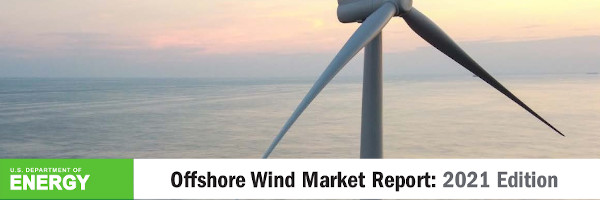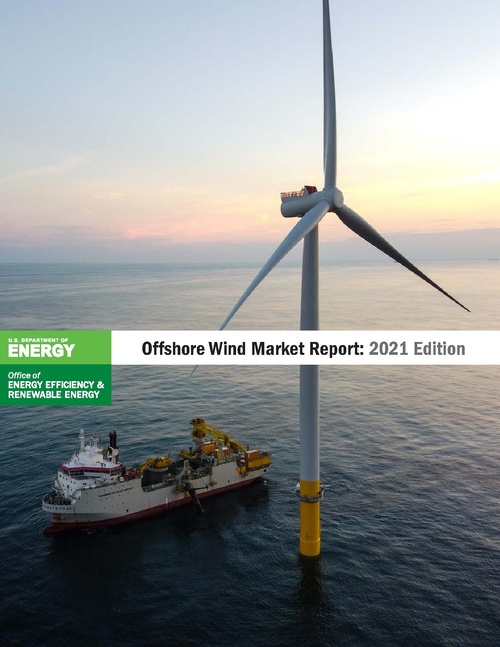Offshore Wind Market Report: 2021 Edition: Difference between revisions
No edit summary |
No edit summary |
||
| (3 intermediate revisions by the same user not shown) | |||
| Line 1: | Line 1: | ||
{{ | {{Report | ||
|Image=Offshore Wind Report.jpg | |Image=Offshore Wind Report.jpg | ||
|Published=2021-08-13 | |Published=2021-08-13 | ||
|Organization= | |Organization=US Department of Energy, National Renewable Energy Laboratory | ||
|Where=Washington DC | |Where=Washington DC | ||
|Summary=The Offshore Wind Market Report: 2021 Edition is intended to provide offshore wind policymakers, regulators, developers, researchers, engineers, financiers, supply chain participants, and other stakeholders with up-to-date quantitative information about the offshore wind market, technology, and cost trends in the United States and worldwide. | |Summary=The Offshore Wind Market Report: 2021 Edition is intended to provide offshore wind policymakers, regulators, developers, researchers, engineers, financiers, supply chain participants, and other stakeholders with up-to-date quantitative information about the offshore wind market, technology, and cost trends in the United States and worldwide. | ||
Latest revision as of 23:00, October 3, 2022
| Report | |
|---|---|
| Image | 
|
| Published | 2021-08-13 |
| Point(s) of Contact | |
| Organization(s) | US Department of Energy National Renewable Energy Laboratory |
| Where | Washington DC |

| |
The Offshore Wind Market Report: 2021 Edition is intended to provide offshore wind policymakers, regulators, developers, researchers, engineers, financiers, supply chain participants, and other stakeholders with up-to-date quantitative information about the offshore wind market, technology, and cost trends in the United States and worldwide.
This report details information on the domestic offshore wind industry to provide a U.S. context and help navigate technical and market barriers and opportunities. Offshore wind turbine at sea with a boat.
- Key Findings
Driven by falling offshore wind prices, federal action, and state-level commitments, the U.S. offshore wind pipeline grew 24% over the previous year, with 35,324 MW now in various stages of development. With the installation of the Coastal Virginia Offshore Pilot project, this pipeline now includes two projects, totaling 42 MW in operation. The Bureau of Ocean Energy Management created five new Wind Energy Areas in the New York Bight with a total capacity of 9,800 MW, representing a large portion of the 2020−2021 pipeline growth. Massachusetts' Vineyard Wind I became the first approved, commercial-scale offshore wind energy project in the United States. There are 15 projects in the U.S. offshore pipeline that have reached the permitting phase, and eight states have set offshore wind energy procurement goals for a total of 39,298 MW by 2040.
Global offshore wind installations in 2020 totaled 5,519 MW. Turbine sizes continued to grow, with average rotor diameters exceeding 150 meters and turbine capacities more than 7.5 MW. New trends also emerged in 2020, including increased interest in using offshore wind to produce clean hydrogen. The global pipeline for floating offshore wind energy more than tripled in 2020 to 26,529 MW.